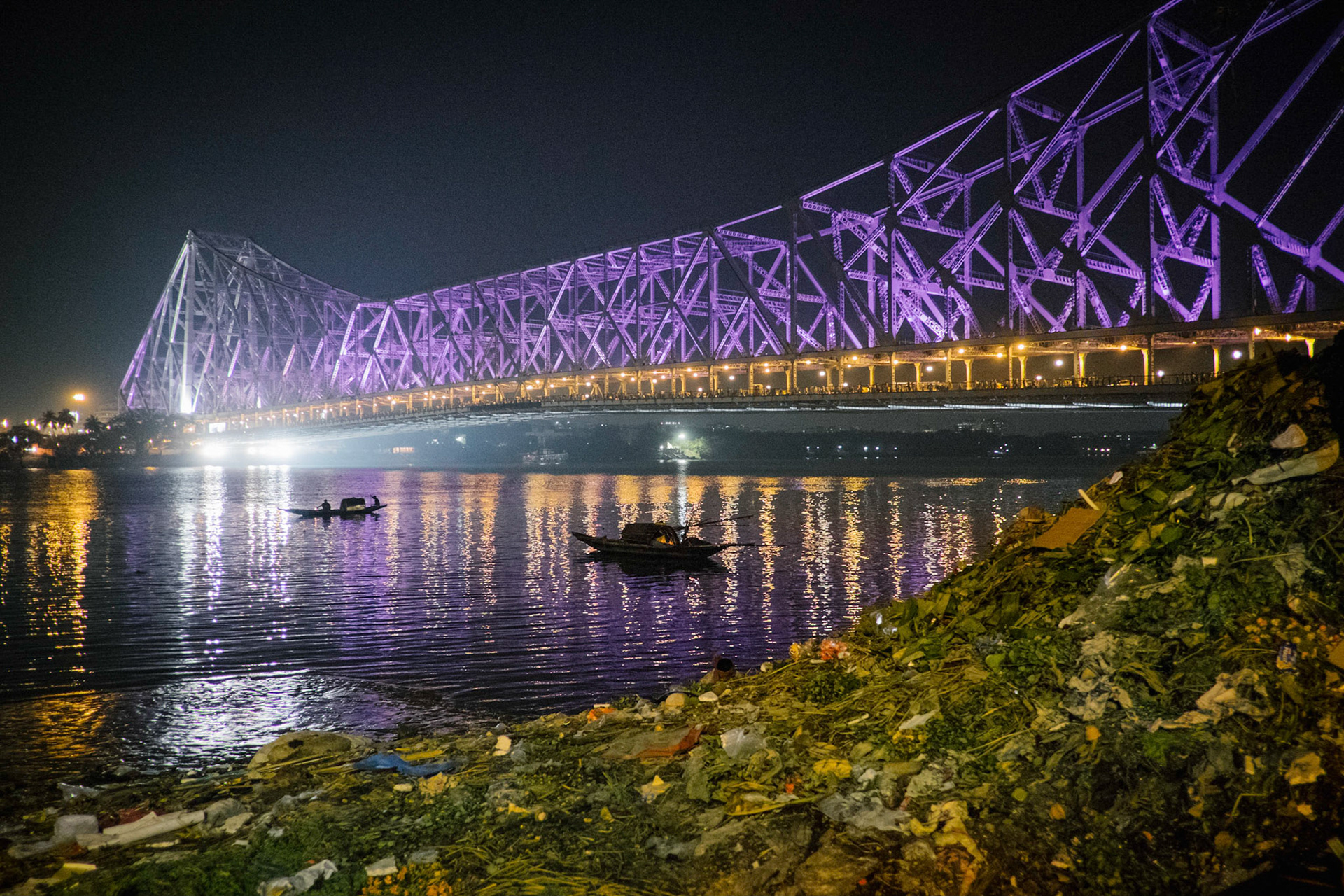HOWRAH BRIDGE
A HALF MILLION PER DAY
In the year 2050 two of three people will live in citys. The urbanisation is rising rapidly. Megacitys sprout from the ground, the most of them in India. This will bring big challenges for the infrastructural development.
In his story „A half million per day“ the german photographer, Ole Spata, exhibits the life around the most frequented bridge in the world. Every day a half million people cross the Howrah Bridge in Calcutta to reach the other side of the holy river Ganges. The bridge is the main connection between the mega city Calcutta with a population of 15 million people and Howrah, a city of one million people. The life around the bridge seems like a snapshot of India and a symbol of population growth in citys.
The Howrah Bridge was constructed in 1943 during the final decade of British colonial rule. At 705 metres (2,300 feet) long the iconic structure serves as the gateway to Kolkata, linking the city with Howrah Station, one of the world's busiest railway hubs. The Sidewalks are occupied by street dealerships, hairdressers and beggars. The vibrant life starts with sunrise. People can be seen taking a bath in the brown water of „mother ganga“, washing there clothes and dishes or relieving themselves on the river bank. Right next to the bridge thousands of wholesalers sell flower garlands, wedding bouquets and cut flowers at the giant and colourful flowermarket. Only a few meters away massive wrestler bodys roll around in the sand, wearing nothing more than really short underpants. In the temple behind the bridge the holy Hindumonks, called Babas, smoke weed and pray to their favorite god Shiva.
In his story „A half million per day“ the german photographer, Ole Spata, exhibits the life around the most frequented bridge in the world. Every day a half million people cross the Howrah Bridge in Calcutta to reach the other side of the holy river Ganges. The bridge is the main connection between the mega city Calcutta with a population of 15 million people and Howrah, a city of one million people. The life around the bridge seems like a snapshot of India and a symbol of population growth in citys.
The Howrah Bridge was constructed in 1943 during the final decade of British colonial rule. At 705 metres (2,300 feet) long the iconic structure serves as the gateway to Kolkata, linking the city with Howrah Station, one of the world's busiest railway hubs. The Sidewalks are occupied by street dealerships, hairdressers and beggars. The vibrant life starts with sunrise. People can be seen taking a bath in the brown water of „mother ganga“, washing there clothes and dishes or relieving themselves on the river bank. Right next to the bridge thousands of wholesalers sell flower garlands, wedding bouquets and cut flowers at the giant and colourful flowermarket. Only a few meters away massive wrestler bodys roll around in the sand, wearing nothing more than really short underpants. In the temple behind the bridge the holy Hindumonks, called Babas, smoke weed and pray to their favorite god Shiva.
